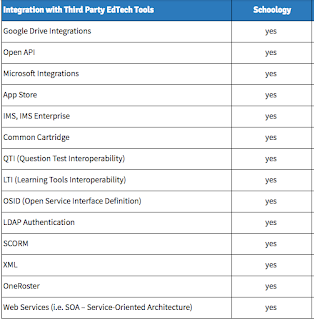“Coaching is the art of
creating an environment, through conversation and a way of being, that
facilitates the process by which a person can move toward desired goals in a
fulfilling manner. Tim Gallwey (2000, p. 177)”. Galley understands that
coaching is an art and it has to be cultivated. When I think about the aspects
of coaching, I think about the following:
1.
Building Positive Professional Relationships
2.
Understanding Coaching Systems
3.
Differentiating Coaching
Building a positive
professional relationship built on trust and clear expectations is extremely
important. According to Marzano & Simms 2013, “a coach can build trust in
many ways, such as spending time together, active listening, and personal stories”,
(pg. 218). A coach should know his/her
job description and share it with teachers. This will enable teachers to
understand the coach's work descriptions and expectations. Spending time with
teachers where conversations are had to get to know each other provides quality
bonding time for teachers and coaches. During the conversation, coaches should
practice active listening that builds trust as well as share personal stories. Jones
2018 believes, “Making personal connections is a great first step to developing
a positive professional relationship.” In this video, view instructional coach, Joshua Parker, build a relationship with a teacher, Marquis Colquitt.
Understanding the
different coaching systems, as well as their advantages and disadvantages, will
enable a coach to be proactive in his/her approach.
·
Teacher- initiated- coaching-Teacher asks
for a coach.
·
Administrator-initiated coaching- the administrator requires a teacher to work with a coach.
·
District-initiated- coaching- A district
requires a specific group of educators to work with a coach.
·
School- districtwide coaching- Every
teacher in the district/school is required to work with a coach. (Marzano &
Simms 2013, Pg. 211)
A coaching system where
the teacher initiates the coach can be one that is positive because the teacher
is a willing participant. On the other hand, the administrator- initiated -coaching system lends to teachers not trusting their coach because they feel as though
he/she is there as an “I gotcha” coach. Because of district-initiated-coaching
allows administrators to select coaches for teachers, this system can have the
same negative effect as the teacher-initiated -coaching system. Lastly, the
schoolwide/districtwide coaching system enables all teachers within the
district/school to have access to a coach. This levels the playing field and no
one person feels singled out.
Regardless of the
coaching system used, a coach must understand the importance of differentiating
coaching. Differentiation can take place through the different types of
coaching conversations, understanding a teacher’s level of experience, and
their readiness to make a change. As an instructional coach, I set the tone of
the relationship by building a professional relationship built on trust and
expectations. Moreover, I meet the needs of my teachers through differentiated
coaching. For example, one teacher may struggle with providing his/her students with
a standard aligned morning routine. Because of the lack of structure, students are off task and disruptive. In a second classroom, a teacher has a standard aligned
morning routine; however, he/she does most of the work versus facilitating student
learning.
Both teachers are in need
of support at different levels. According to Eller, “Instructional coaching is
a unique form of professional development that provides individual assistance
to teachers in refining and improving their instructional practices. It is the
perfect vehicle for differentiation based on the needs of each teacher.
References
Eller,
J. & Eller, S. (2018). Differentiated instructional coaching: for maximum
effectiveness, tailor instruction to teachers’ needs
Jones,
L. (2018). Tch tips: Make the most out of your coaching experience. Retrieved
from https://www.teachingchannel.org/tch/blog/tch-tips-make-most-out-your-coaching-experience.
Marzano,
R.J. & Simms, J.A. (2013). Coaching classroom instruction. Marzano Research
Laboratory: Bloomington, IN.









